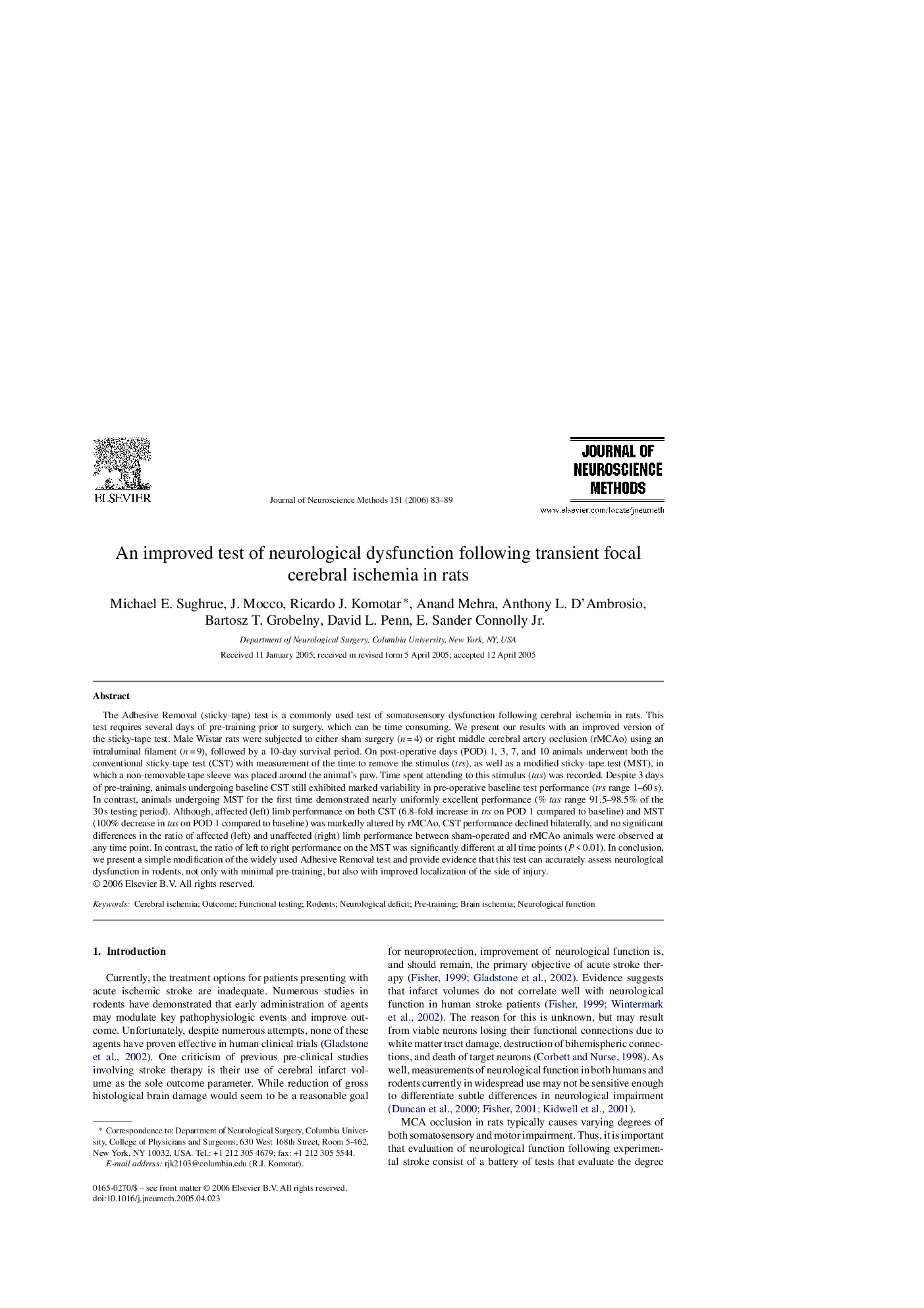| Article ID | Journal | Published Year | Pages | File Type |
|---|---|---|---|---|
| 4336932 | Journal of Neuroscience Methods | 2006 | 7 Pages |
The Adhesive Removal (sticky-tape) test is a commonly used test of somatosensory dysfunction following cerebral ischemia in rats. This test requires several days of pre-training prior to surgery, which can be time consuming. We present our results with an improved version of the sticky-tape test. Male Wistar rats were subjected to either sham surgery (n = 4) or right middle cerebral artery occlusion (rMCAo) using an intraluminal filament (n = 9), followed by a 10-day survival period. On post-operative days (POD) 1, 3, 7, and 10 animals underwent both the conventional sticky-tape test (CST) with measurement of the time to remove the stimulus (trs), as well as a modified sticky-tape test (MST), in which a non-removable tape sleeve was placed around the animal's paw. Time spent attending to this stimulus (tas) was recorded. Despite 3 days of pre-training, animals undergoing baseline CST still exhibited marked variability in pre-operative baseline test performance (trs range 1–60 s). In contrast, animals undergoing MST for the first time demonstrated nearly uniformly excellent performance (% tas range 91.5–98.5% of the 30 s testing period). Although, affected (left) limb performance on both CST (6.8-fold increase in trs on POD 1 compared to baseline) and MST (100% decrease in tas on POD 1 compared to baseline) was markedly altered by rMCAo, CST performance declined bilaterally, and no significant differences in the ratio of affected (left) and unaffected (right) limb performance between sham-operated and rMCAo animals were observed at any time point. In contrast, the ratio of left to right performance on the MST was significantly different at all time points (P < 0.01). In conclusion, we present a simple modification of the widely used Adhesive Removal test and provide evidence that this test can accurately assess neurological dysfunction in rodents, not only with minimal pre-training, but also with improved localization of the side of injury.
